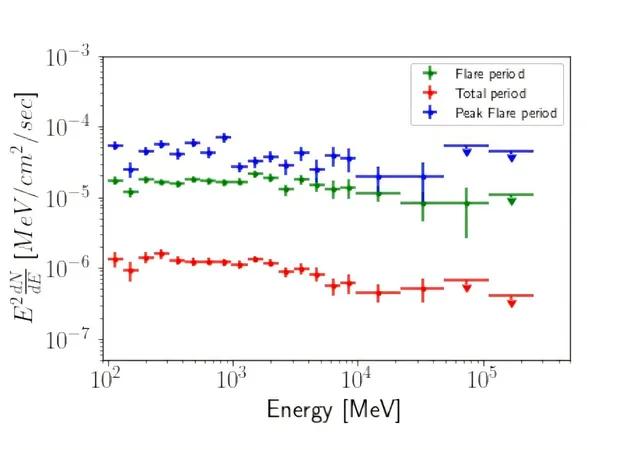
Stunning Gamma-ray Burst Unveiled from Cosmic Radio Source 3C 216!
2025-01-08
Author: Sarah
Introduction
In an exciting breakthrough for astrophysics, a team of Italian astronomers utilizing NASA's Fermi Space Telescope has uncovered significant gamma-ray activity emanating from a distant radio source known as 3C 216. Their findings, shared in a recent research paper on the arXiv preprint server, mark a pivotal moment in our understanding of cosmic phenomena.
Overview of 3C 216
3C 216, located over 2 billion light-years away, is classified as a compact steep spectrum (CSS) object and boasts a redshift of approximately 0.67. Spanning a projected linear size of about 182,500 light-years, this remarkable radio galaxy features a steep radio spectrum along with a compact structure, revealing a complex and dynamic nature.
Previous Observations
Prior observations have established 3C 216 as a unique radio galaxy with a core component enveloped by extensive structures and harboring an inner relativistic jet. Notably, this galaxy is linked to the gamma-ray source 4FGL J0910.0+4257, further intertwining its significance within astrophysical studies.
Surge in Gamma-ray Activity
Beginning in late 2022, a surge in gamma-ray activity from 3C 216 was detected, prompting an extensive monitoring campaign led by astronomer Federica Giacchino from the National Institute for Nuclear Physics in Rome. The breakthrough moment came on two specific dates: December 8, 2022, and May 1, 2023. On these days, Fermi's Large Area Telescope (LAT) observed a dramatic increase in gamma-ray emissions.
Remarkable Observations
The astonishing outburst recorded on May 1, 2023, saw the gamma-ray flux shoot up by a staggering factor of 177 compared to its average level, while the photon index dropped from 2.57 to 2.11. This represents the highest daily flux and the hardest photon index documented for 3C 216, highlighting a significant energetic event in this cosmic locale.
Multiwavelength Data
In a remarkable development, multiwavelength data collected from May 1 to May 9, 2023, showed simultaneous flaring activity across various wavelengths, including optical, ultraviolet, X-ray, and gamma-ray emissions. The coherent evolution of the spectral energy distribution throughout the flaring period suggests a unified source for these emissions.
Conclusion
The research team concluded that the explosive activity observed in 3C 216 can be attributed to synchrotron self-Compton (SSC) radiation, a process likely linked to the rapid acceleration of charged particles within the galaxy's jet. This acceleration results in high-energy emissions as the particles cool through radiative losses.
The findings not only reinforce the connection between SSC processes and gamma-ray outbursts in radio sources like 3C 216 but also open new avenues for understanding the intricate mechanisms at play in these distant cosmic entities.
With this groundbreaking discovery, astronomers are one step closer to unraveling the mysteries of the universe, shining a light on the violent and energetic events that define our cosmos. What other secrets lie hidden in the depths of space? Stay tuned as we continue to explore the wonders of the universe!
 Brasil (PT)
Brasil (PT)
 Canada (EN)
Canada (EN)
 Chile (ES)
Chile (ES)
 Česko (CS)
Česko (CS)
 대한민국 (KO)
대한민국 (KO)
 España (ES)
España (ES)
 France (FR)
France (FR)
 Hong Kong (EN)
Hong Kong (EN)
 Italia (IT)
Italia (IT)
 日本 (JA)
日本 (JA)
 Magyarország (HU)
Magyarország (HU)
 Norge (NO)
Norge (NO)
 Polska (PL)
Polska (PL)
 Schweiz (DE)
Schweiz (DE)
 Singapore (EN)
Singapore (EN)
 Sverige (SV)
Sverige (SV)
 Suomi (FI)
Suomi (FI)
 Türkiye (TR)
Türkiye (TR)
 الإمارات العربية المتحدة (AR)
الإمارات العربية المتحدة (AR)